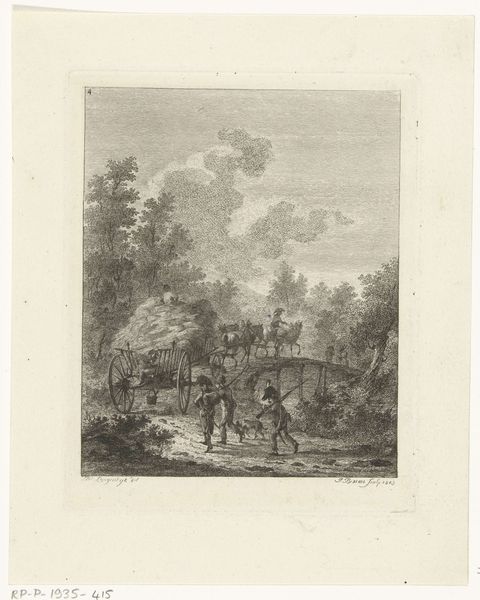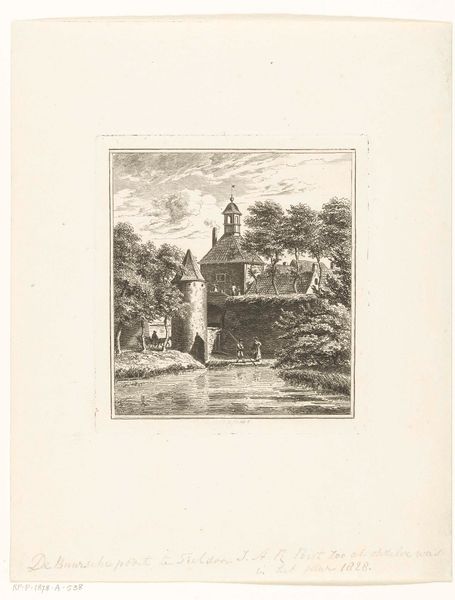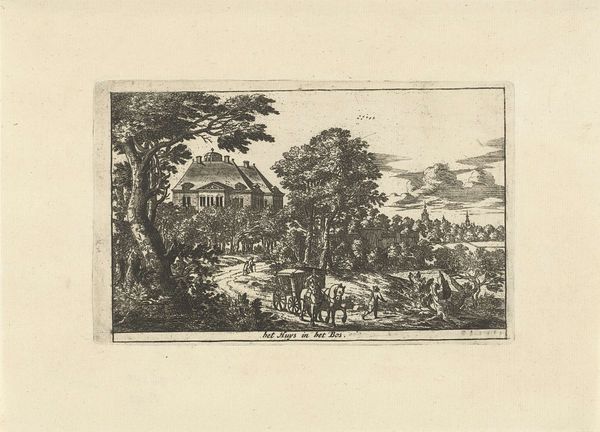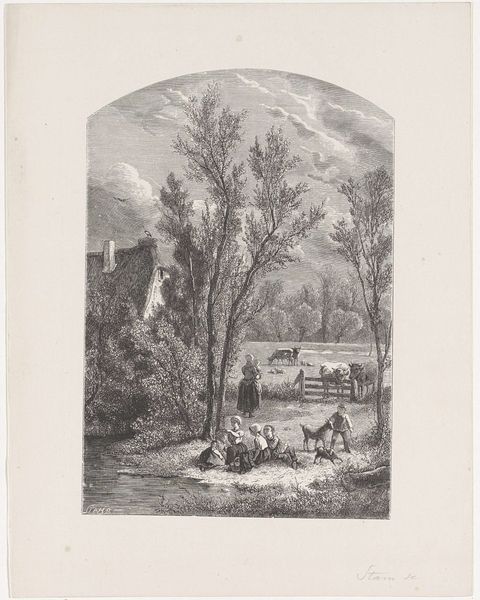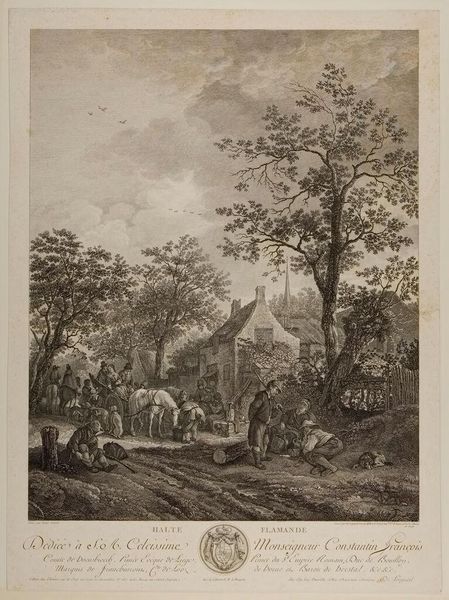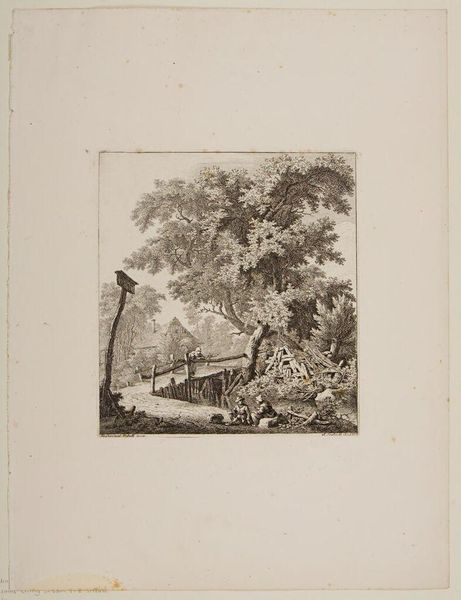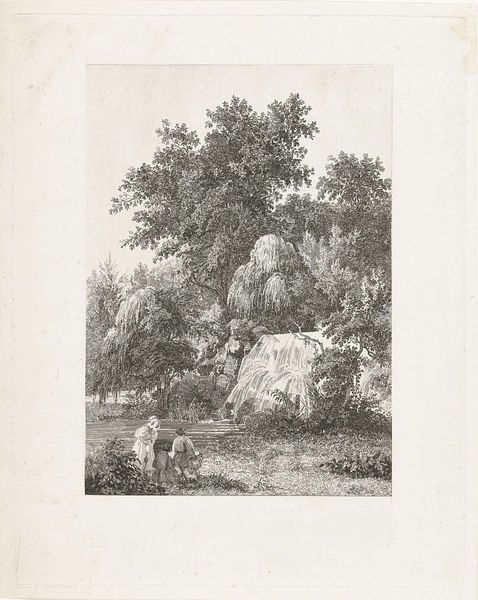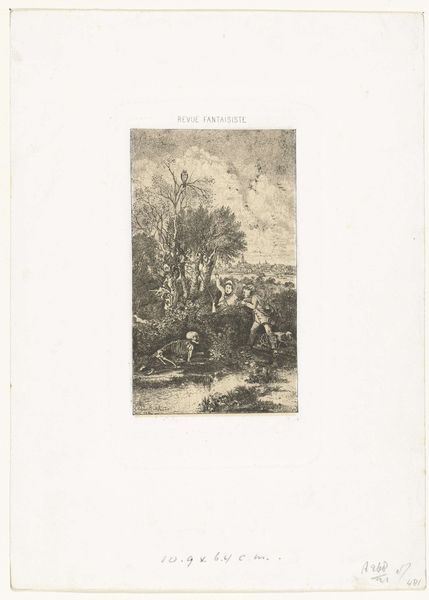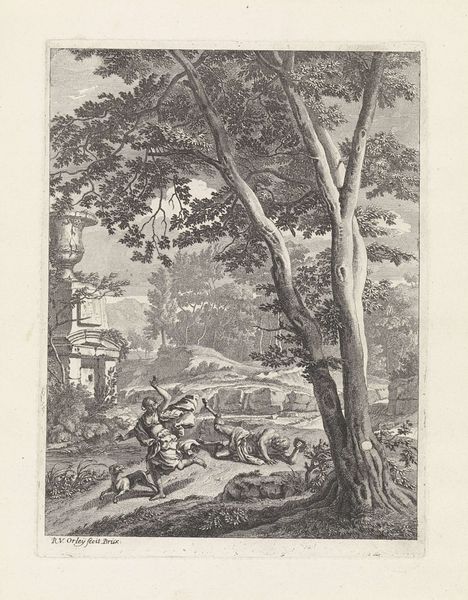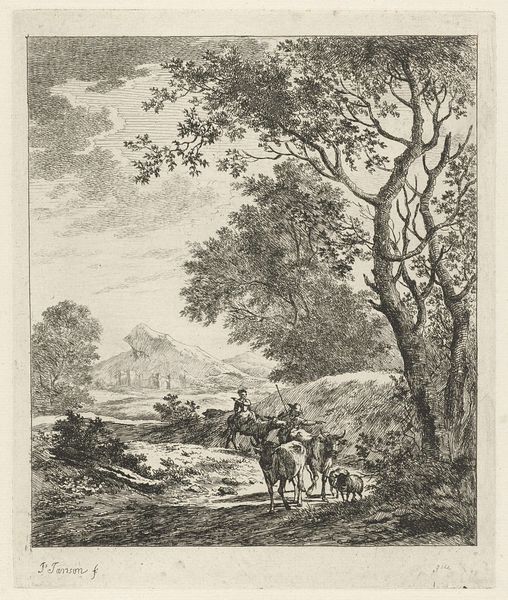
print, etching, engraving
# print
#
etching
#
genre-painting
#
engraving
#
realism
Dimensions: height 160 mm, width 120 mm
Copyright: Rijks Museum: Open Domain
Editor: So, this etching is called *Kegelaars voor een herberg*, or "Bowlers Outside a Tavern", and it’s attributed to Johannes Arnoldus Boland, likely made between 1860 and 1900. It feels... busy, full of people. What catches your eye about this scene? Curator: Immediately, I see a representation of labor and leisure interwoven within a very specific social fabric. Look at how the working class relaxes – through games of skill right outside the place that facilitates, perhaps even demands, their labor. Who profits from that tavern and how is their work valued versus their leisure? Editor: That's a perspective I hadn't considered. I was focused on the literal scene, but thinking about power structures shifts the focus. Is the tavern an oppressive structure, or simply a part of life? Curator: Perhaps both? These gathering spaces in 19th-century life played an important role – think about whose voices were heard, whose were silenced. This "realist" genre scene idealizes the setting. Who is absent from the narrative that may experience the tavern differently? How does gender factor into that, or race, given that many colonialized people would not even have access to such locations? What political discourse do we lose with these idealized portrayals? Editor: I see what you mean, the tavern as a microcosm reflecting broader societal power dynamics. It prompts us to look beyond what’s visible in the image, think about unseen communities that might have a stake in that space but don’t show up in the frame. Curator: Exactly. So by questioning what is represented, and just as importantly, *who* is represented in this idealized version, we can begin to unpick assumptions about the world it presents. Editor: I appreciate that perspective. I went in thinking of it just as a quaint slice of life. But now I see how much more there is to unpack, particularly in relation to labor and those missing narratives. Curator: It is not always what you *see* but how that imagery serves broader discourse. This process really highlights how deeply art can engage in discussions around class, labor, and visibility, prompting critical conversations!
Comments
No comments
Be the first to comment and join the conversation on the ultimate creative platform.
